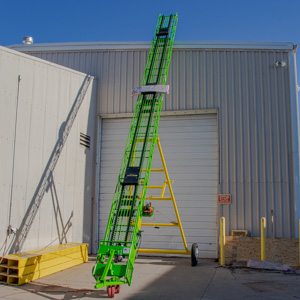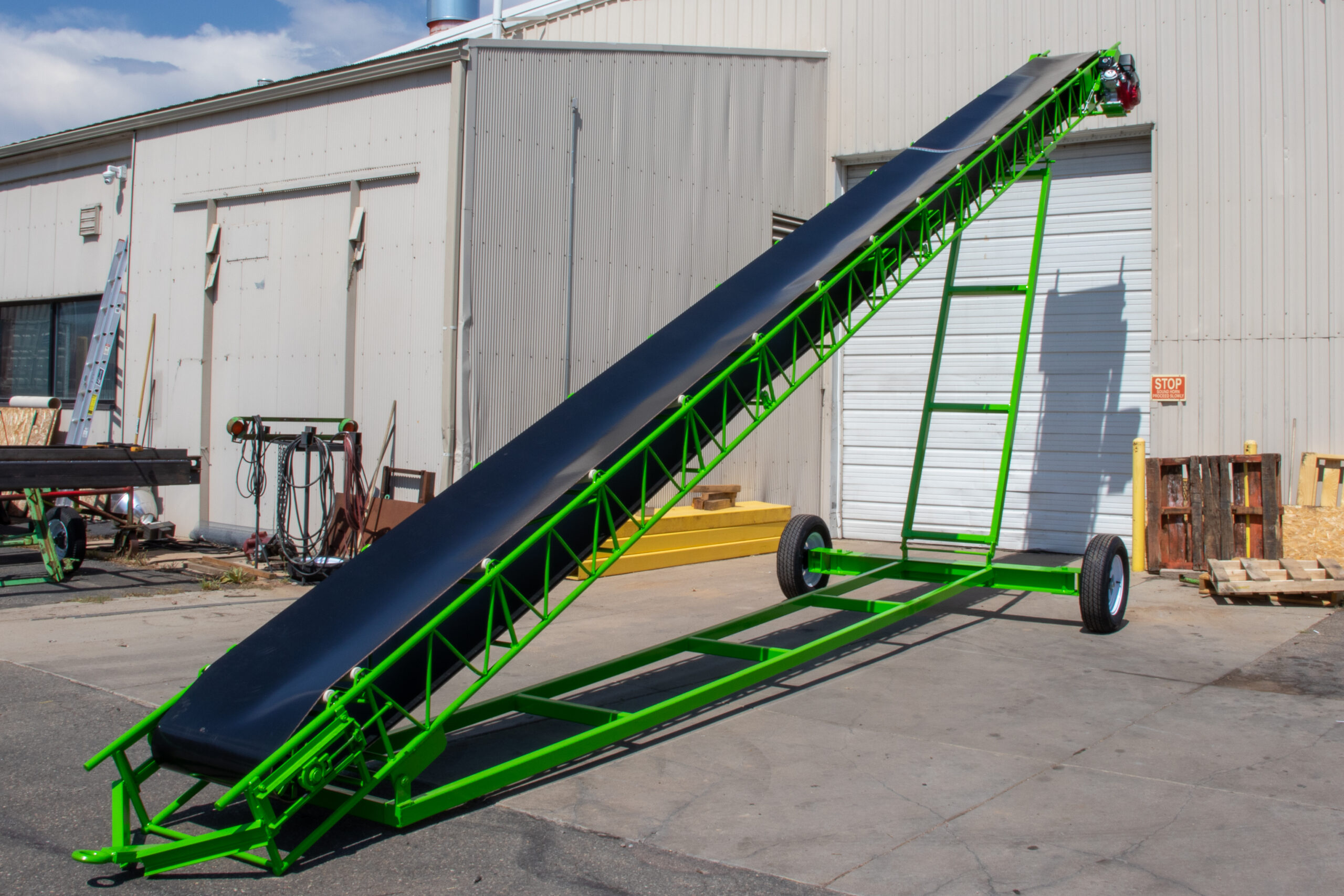The Chain & Flight Towable Elevating Carriage is a high-speed and unique mobile conveyor belt for moving bricks, tiles, and mortar. The CF-TEC has been developed for increasing performance and safety during roofing. This article will review the benefits of using an elevating conveyor and how to choose the right lift for the job.
Options to elevate carriage to the roof
You and your employees are at high risk for injury when carrying materials by hand, hefty materials. Reduce sick leave, OSHA penalties for non-compliance, and workers’ compensation costs using an elevator solution that lifts the carriage to the roof. There are numerous alternatives for bridging distances to the roofing area. A bucket or box on a rope was used to carry the weight up; this is almost as unsafe as moving the tiles by hand on a ladder.
Let’s look at what other professional alternatives are available and their advantages and disadvantages.

- Forklift: Forklifts are used to transport and lift materials with steel forks. The drive motor may be diesel, gasoline, or LPG, or it may be powered by an electric motor (battery or power cell). As a rule of thumb, the loads moved are usually stored on pallets. While it can drive safely in a conventional warehouse, the often rough terrain of construction sites can create imbalances that cause the truck to crash. Forklifts must be transported to the job site and can only be operated by a certified professional. Using this method is only a viable option for industrial buildings.
- Boom truck: A crane is a lifting machine for loading and transporting them short distances. The crane consists of a hoist and a gear, supplemented by a supporting structure, which is made of steel. Since ancient times, cranes have been used extensively in industry, agriculture, construction, and transportation, and many various types have been advanced over the years to suit specific tasks. The boom truck is a mobile crane that is indeed often utilized on construction sites. If the roofing requires heavy materials or special machines to be lifted, a boom truck might be a viable solution. However, for a traditional roofing process, such an approach would mean a too expensive resolution. Not to mention, a boom truck is not particularly well-suited when it comes to navigating rugged terrain with precision. It is a good choice when you need to lift a cumbersome cart onto the roof during a large-scale construction.
- Safety hoist ladder: The ladder conveyor can be a great idea for smaller teams where there is no manpower available to constantly pack the cart onto the conveyor. The most significant advantage of the safety hoist solution is the high level of protection from potential damage. You can place larger packages on the platform that is raised on the roof surface. Its most significant disadvantage, why it is not used as often as the chain & Flight Towable Elevating Carriage, is its slowness. You have to carefully pack it into the safety lift, which can be difficult when unpacking on the roof.
Benefits of the Chain & Flight Towable Elevating Carriage
While there are many references to using the Chain & Flight Towable Elevating Carriage, its biggest differentiator is in the way of operation. While other conveyors, and even the boom trucks and forklifts, require you to pack the carriage onto pallets or in safety packs, the Towable Roofing Conveyor can lift the materials you need one at a time.
Why is it an excellent solution for your roofing team? Thanks to the way it works, it can significantly speed up the process of laying tiles. As you can see in our video presentation, people can efficiently operate the conveyor, one load, the other unpacks, while a third person can handle the placement of the roof tiles. This is by far the fastest method, especially if you are working with roof tiles that can be laid quickly.

This way, you create a fast yet reliable process for transporting the roofing material to the job site and can make a safe way of working with minimal supervision. Compared to other conveyor models, the Chain & Flight Towable Elevating Carriage allows you to optimize performance and workload.
This roof tile conveyor is easy to operate and does not require any special approval or certificate. Compared to a forklift or boom truck solution, this results in a more cost-effective and more straightforward operation for your team as you do not need to hire a specialist to operate the machines.
This shingle conveyor is the perfect mobile solution your team needs. It is especially effective on job sites where the ground has not yet been leveled, and the terrain would be too unstable or rough for a crane or forklift. Due to its small size, the C&F- TEC is easy to transport on-site and does not require expensive storage.
This conveyor is easy to assemble, so not only is it quickly ready for use, but it can also be changed over without significant interruption to the roofing process. Its main advantages can be summarized as follows:
- It can replace up to 3-4 workers. Two people can have it up and running in 4 minutes!
- 2 people on the roof and scaffold can move it easily
- Easy to transport to the construction site with trailer or van
- Can lift more than 3,200 sq ft roof tiles in 1 hour!
- It can be transported not only upwards but also backward, so it is ideal for demolition work!
For further information, check out our website (https://www.ezliftconveyors.com/), and in case you have any questions, don’t hesitate to contact us via email or call. Our team at E-Z Lift Conveyors is always there for you and your business.
 Traditional forms of transportation can be cumbersome and heavy. Portable conveyors are a convenient option for businesses that need to transport loose materials or objects from one location to another.
Traditional forms of transportation can be cumbersome and heavy. Portable conveyors are a convenient option for businesses that need to transport loose materials or objects from one location to another.
 Conveyors are used to transport products and materials efficiently and safely on job sites; they also drastically improve productivity. Depending on the materials you need to transport, different conveyor models are available.
Conveyors are used to transport products and materials efficiently and safely on job sites; they also drastically improve productivity. Depending on the materials you need to transport, different conveyor models are available.
 Choosing a tire conveyor can be a daunting experience. But we are here to help you with this task, and by doing so, make your life easier.
Choosing a tire conveyor can be a daunting experience. But we are here to help you with this task, and by doing so, make your life easier.